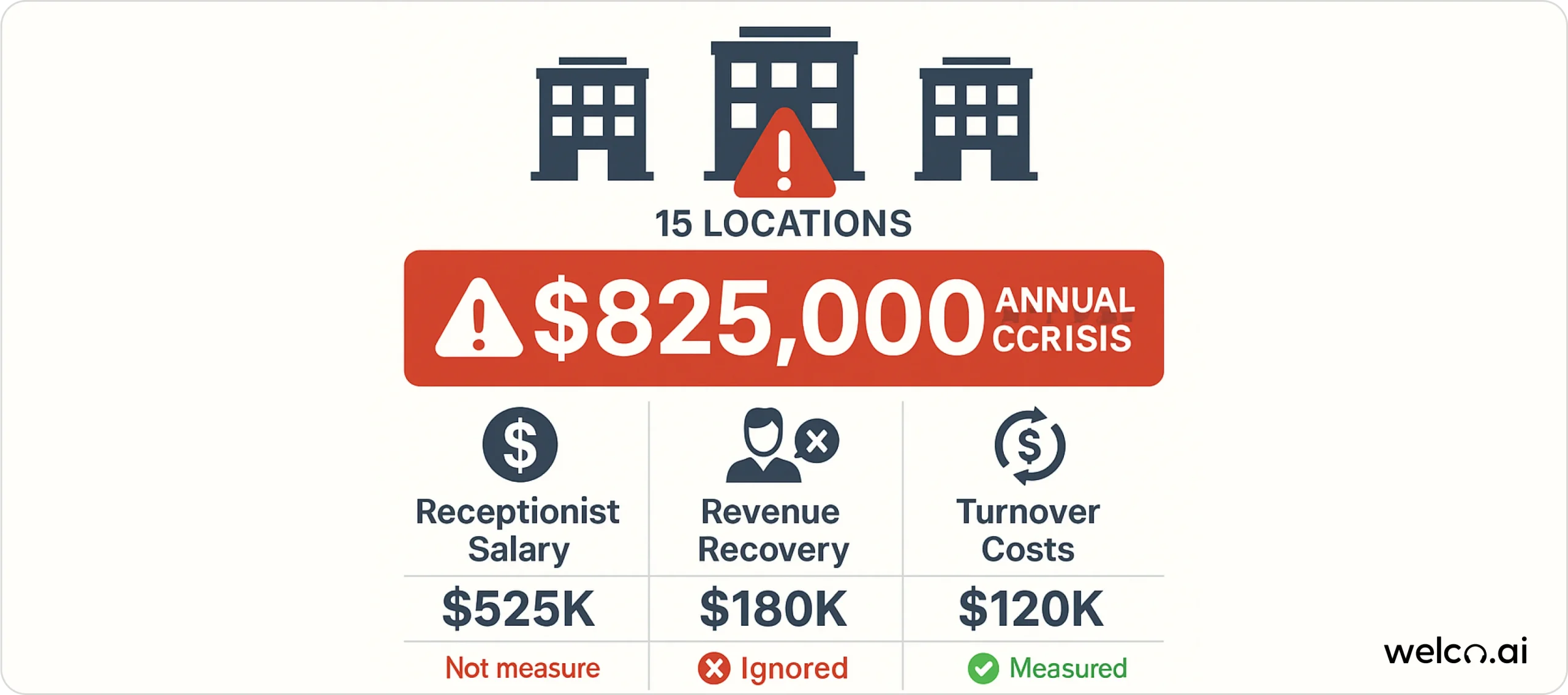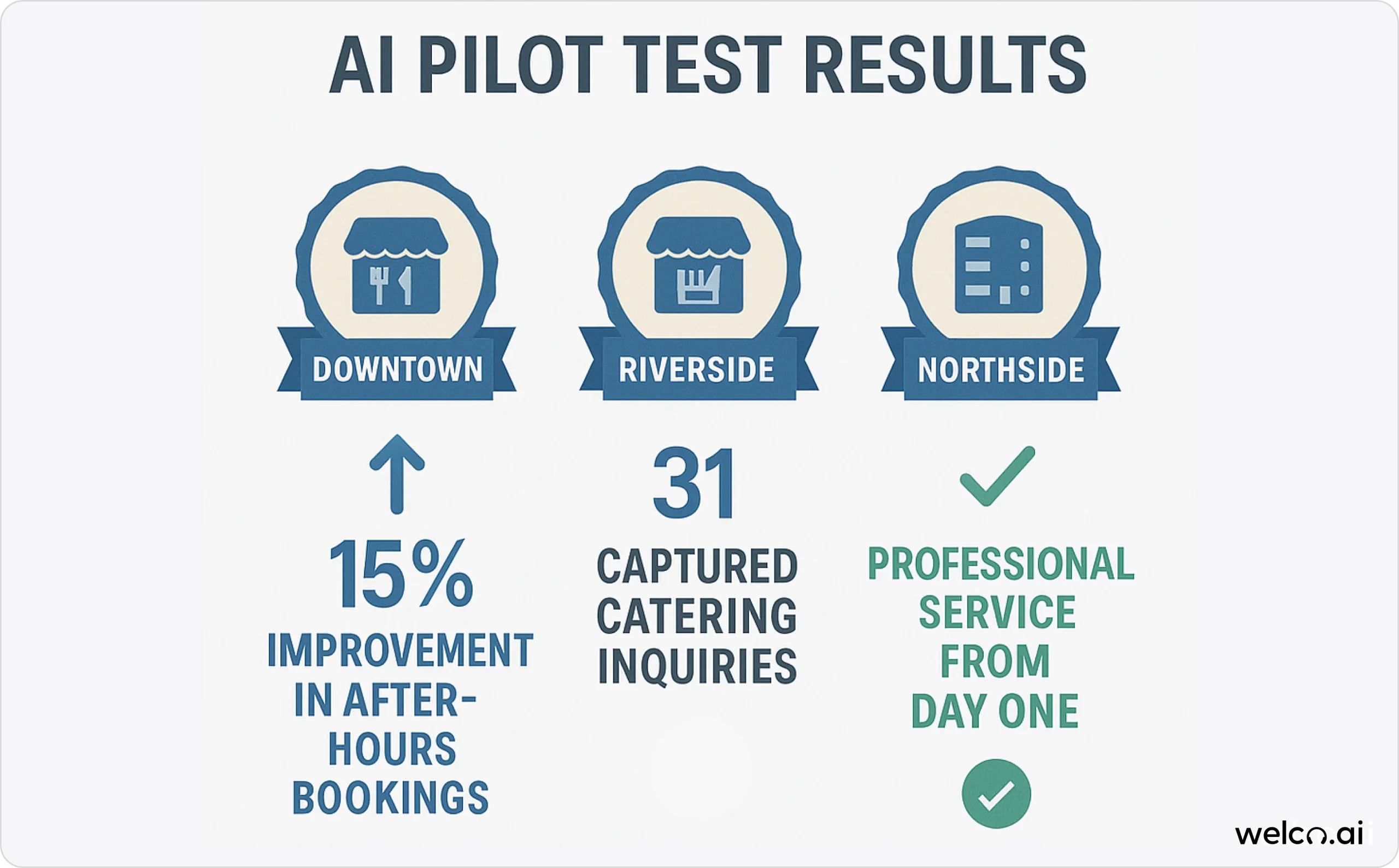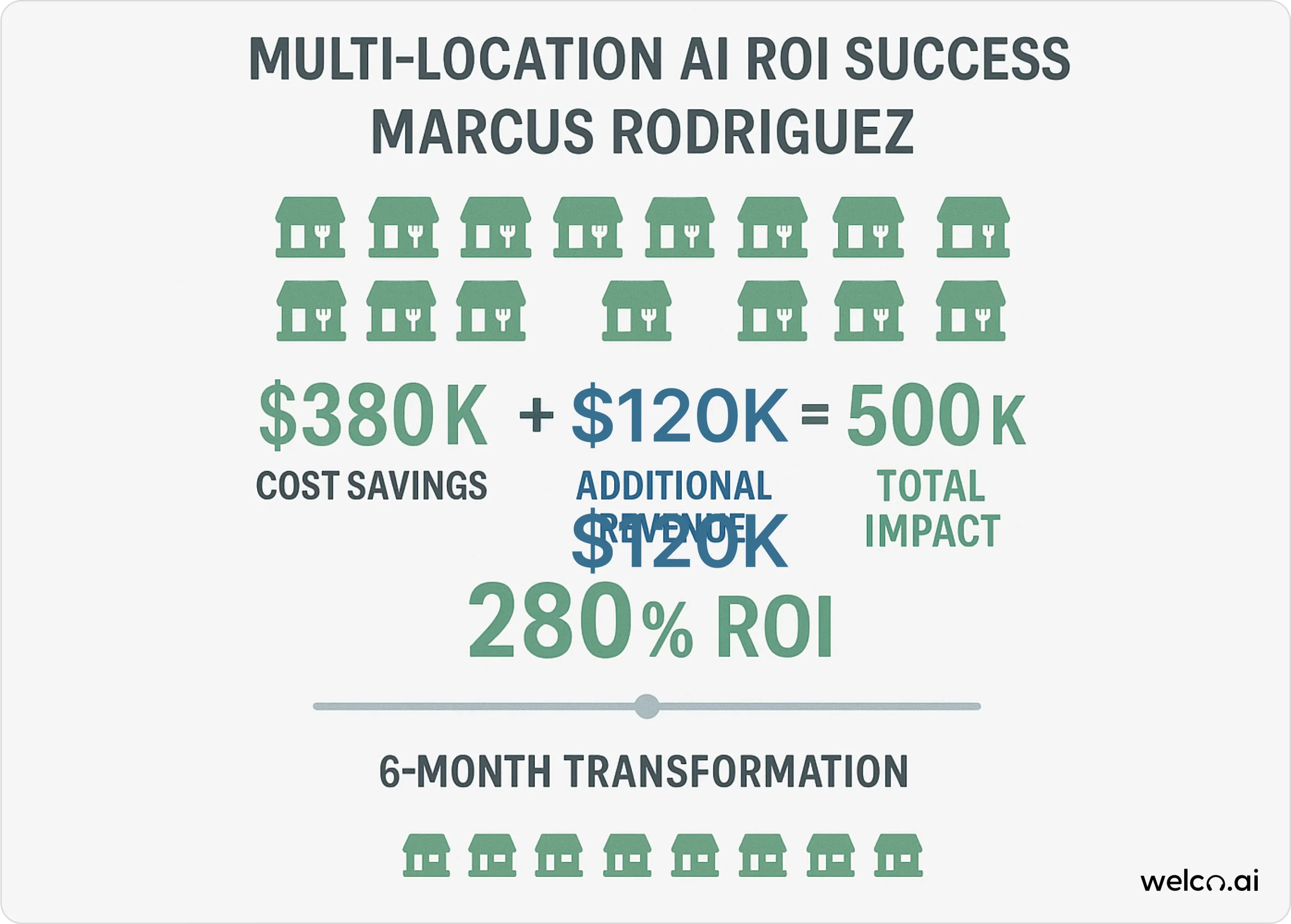How to Scale AI Reception Across Multiple Locations (Without the Chaos)

I watched Marcus Rodriguez lose a $50,000 catering contract because his Westside location couldn’t answer the phone during lunch rush.
Marcus runs 15 restaurant locations across three states. His flagship downtown steakhouse was thriving—customers raved about the professional service and attention to detail. But his suburban locations were hemorrhaging money.
“I’m spending more on receptionists than rent,” Marcus muttered as we calculated the numbers: $35K per location, times 15 locations. That’s over $500,000 just for people to answer phones.
The worst part? It wasn’t even working.
His Riverside location missed 23 catering orders in one month. The Northside restaurant lost an entire wedding party because no one answered their calls on a Tuesday afternoon. Customers who loved the downtown experience felt like they were dealing with completely different businesses at other locations.
“My brand is dying one missed call at a time,” Marcus told me during our first meeting.
After implementing AI reception across all locations, Marcus achieved consistent, professional service everywhere while saving $380,000 annually on staffing costs. Here’s exactly how he did it—and the painful lessons that almost killed his business first.
The $480K Mistake Most Multi-Location Owners Make
Running multiple locations creates problems that single-location businesses never face, and most owners don’t realize it until it’s too late.
The Consistency Nightmare
Every location needs the same professional experience, but human staff naturally vary in:
- Phone manner and professionalism
- Product knowledge and accuracy
- Availability during breaks and sick days
- Ability to handle peak call volumes
Marcus discovered this the hard way when a food blogger called three different locations asking about vegan options. Location 1 said “we don’t do that,” Location 2 put her on hold for 8 minutes, and Location 3 gave detailed information about their plant-based menu. Guess which review got published?
The Cost Multiplication Trap
I watched Marcus panic as the real numbers became clear:
- Receptionist salary: $35,000 × 15 locations = $525,000
- Benefits and training: $12,000 × 15 locations = $180,000
- Turnover replacement costs: $8,000 × 15 locations = $120,000
- Total annual cost: $825,000
“That’s enough to open three new locations,” Marcus realized.
To truly understand what Marcus was up against, it’s essential to recognize the hidden costs of human receptionists that most businesses overlook. These expenses can easily double your actual reception costs beyond the obvious salary figure—especially when multiplied across multiple locations.

The Coverage Gap Crisis
Marcus’s locations missed 40% more calls than his flagship because:
- Lunch breaks left phones ringing for 30+ minutes
- After-hours calls went straight to voicemail (while competitors captured them)
- Busy periods overwhelmed single receptionists
- Sick days meant entire shifts with zero coverage
The breaking point: A corporate client called five locations trying to book a company event. Four didn’t answer. They booked with a competitor who answered on the first ring.
How Marcus Stopped Bleeding Money (The Hard Way)
Marcus tried everything before AI answering service:
- Hired more staff: Costs skyrocketed, consistency got worse
- Implemented strict scripts: Staff quit, service felt robotic
- Used an answering service: Generic responses killed his brand voice
Nothing worked until he stopped thinking about phones and started thinking about his customer experience.
The Three-Location Test That Changed Everything
Instead of implementing everywhere at once, Marcus chose three pilot locations:
- Downtown flagship: High-performing baseline
- Riverside location: Struggling with missed calls
- Northside restaurant: New location with untested staff
Month 1 Results:
- Downtown: 15% improvement in after-hours bookings
- Riverside: Captured 31 previously missed catering inquiries
- Northside: Professional service from day one
“For the first time in three years, all my locations sounded like the same company,” Marcus said.

The Architecture Choice That Saved His Brand
Marcus chose a hybrid approach that maintained his brand’s warm, professional tone while customizing menu information and hours for each location.
Why hybrid worked for restaurants:
- Consistent brand voice everywhere
- Location-specific menus and hours
- Shared cost efficiencies
- Easy updates across all sites
Marcus’s Shocking Results (And Why They’re Real)
Marcus’s Total Annual Impact:
- Cost savings: $380,000 in ongoing staffing costs
- Additional revenue: $120,000 from captured after-hours bookings
- Total financial impact: $500,000
- ROI: 280% in first year
The transformation timeline:
- Month 1: Basic implementation, 60% efficiency
- Month 3: Staff adapted, 80% efficiency
- Month 6: Full optimization, 95% efficiency
“I wish I’d done this three years ago,” Marcus told me after his first full year. “We could have avoided so much frustration and lost revenue.”

The Implementation Mistakes That Almost Killed Marcus’s Rollout
Mistake 1: Rushing the Timeline
Marcus originally wanted to implement all 15 locations in one month.
What went wrong: Three locations crashed during the first week, staff panicked, customers complained
The fix: Phased rollout over 6 months, 2-3 locations at a time
Mistake 2: Ignoring Staff Fears
“I thought I just needed to tell them how to use it,” Marcus admits.
What went wrong: Managers found creative ways to bypass the system, worried about job security
The fix: Position AI receptionist as assistance, not replacement. Show how it eliminates frustrating interruptions so staff can focus on customers.
The human factor is often the most critical aspect of multi-location implementations. Without proper change management strategies, even the most sophisticated AI phone system can fail due to staff resistance across multiple sites. The businesses that succeed invest as much in managing the human transition as they do in the technology itself.
Mistake 3: Cookie-Cutter Implementation
Marcus tried to use identical setups across all locations.
What went wrong: Each location had different phone systems, hours, and local needs
The fix: Hybrid approach with consistent brand standards but location-specific customization
How to Avoid Marcus’s $50K Mistakes
Step 1: Calculate Your Real Costs
Add up reception costs across all locations. Include salary, benefits, turnover, and missed opportunity costs.
Step 2: Choose 2-3 Pilot Locations
Select locations representing different scenarios:
- One high-performing location
- One struggling with reception issues
- One new or average-performing location
Step 3: Plan for Success
- Budget 4-6 months for full rollout
- Invest in proper staff training and change management
- Set realistic expectations: 280% ROI, not 500%
Step 4: Prepare Your Team
Address job security concerns upfront. Frame AI receptionist as eliminating frustrating interruptions so staff can focus on what humans do best.
For detailed guidance on managing each phase of implementation, our comprehensive implementation guide breaks down realistic expectations by business size and complexity—from small chains that can achieve results in 3-4 months to large operations requiring 6-9 month rollouts.
The Bottom Line
Multi-location AI reception isn’t just about cost savings—it’s about saving your brand consistency and capturing revenue you’re currently losing.
Marcus’s success came from treating implementation as a business transformation, not just a technology upgrade. By focusing on staff buy-in, piloting carefully, and optimizing continuously, he achieved results that exceeded his projections.
The businesses that struggle are the ones that rush implementation, ignore staff concerns, or try to cut corners on planning. The ones that succeed treat it as a strategic initiative requiring proper planning, execution, and ongoing optimization.
Most multi-location businesses break even within 6-9 months and see significant returns by year two. The question isn’t whether AI reception can work for multiple locations—it’s whether you’ll implement it strategically or join the businesses that struggle because they didn’t plan properly.
Don’t make Marcus’s early mistakes. Learn from his success instead.
Frequently Asked Questions
My locations are all different—different phone systems, different staff, different local needs. Won’t AI make everything feel generic and robotic?
This was Marcus’s exact fear, and it’s why he chose the hybrid approach. You maintain consistent brand voice and professional standards while customizing local information like hours, menus, and services. The AI receptionist sounds like your brand everywhere but knows each location’s specifics. Think “same company, local knowledge” rather than “one-size-fits-all robot.”
I’m worried about implementing this across 8+ locations and having it crash spectacularly. What if customers get frustrated and we lose business during the transition?
Start with 2-3 pilot locations representing different scenarios—one high-performing, one struggling, one average. Test, optimize, then roll out gradually. Marcus learned this the hard way after trying to implement everywhere at once and having three locations crash in the first week. Gradual rollout prevents disasters and lets you fix issues before they multiply.
My managers are already resistant to change, and I’m worried they’ll sabotage the AI system. How do I get buy-in across multiple locations?
Position AI as eliminating the frustrating interruptions that prevent them from focusing on customers. Show them how it handles the boring, repetitive calls so they can deal with the complex, relationship-building interactions. Marcus’s biggest surprise was how quickly his managers embraced it once they saw it handle dinner rush calls without overwhelming the front desk.
The upfront costs seem massive when multiplied across all my locations. How do I know I won’t throw away $50K+ like Marcus almost did?
Start small with pilot locations to prove ROI before full investment. Budget $15K-25K per location for year one, but expect 280% ROI by year two based on real multi-location results. The key is measuring all three value categories—cost savings, revenue recovery, and efficiency gains—not just salary replacement. Most businesses break even within 6-9 months.
What happens when the AI doesn’t understand a customer or gives wrong information about a specific location? Will customers get angry and leave bad reviews?
Modern AI phone answering systems include smart escalation when confidence drops below set thresholds. Calls automatically transfer to staff with full conversation context. Marcus’s system achieved 95% accuracy within 6 months, and the few mistakes were quickly corrected. The key is training the AI on location-specific information and having clear escalation protocols for complex situations.
